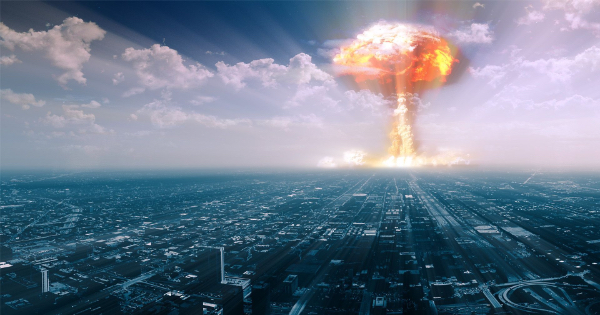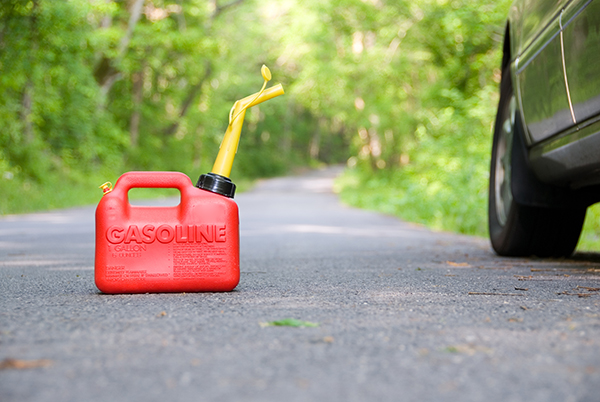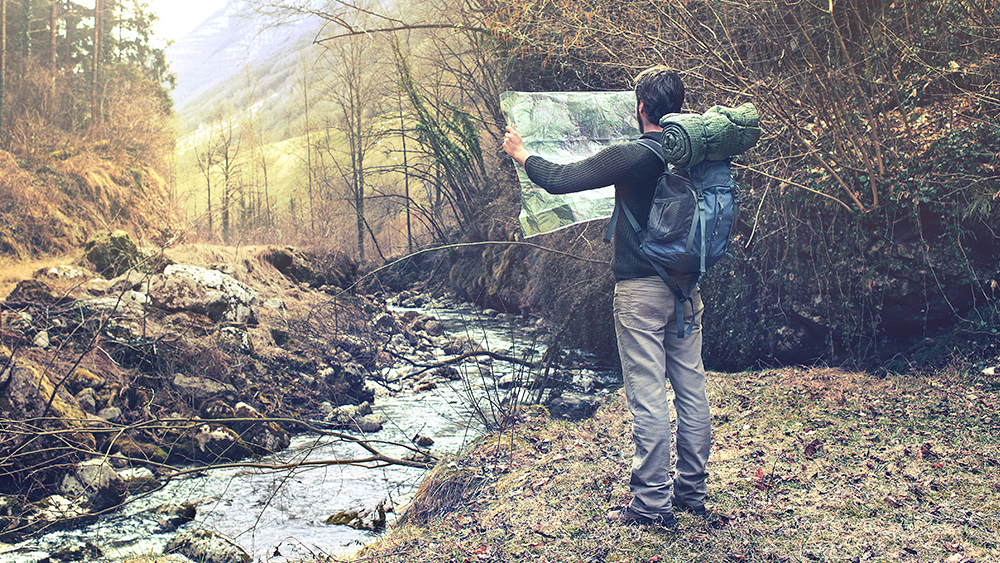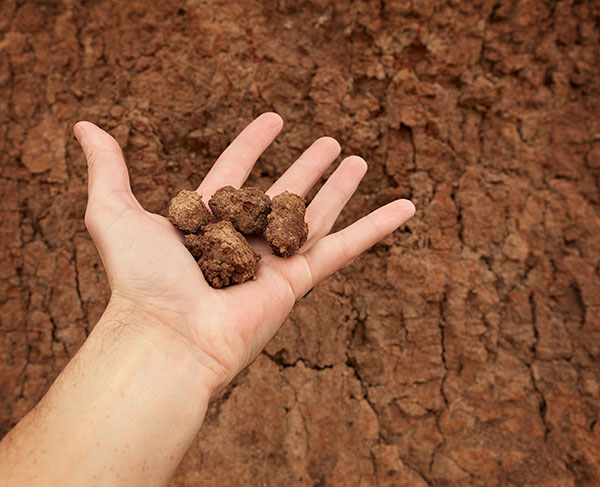Survival skills: Tips for building an improvised fallout shelter
04/28/2023 / By Zoey Sky

Are you prepared to deal with something as catastrophic as nuclear war?
Protect yourself and your family in the event of nuclear war by learning how to build an improvised shelter before SHTF. (h/t to Survivopedia.com)
Estimates suggest that, to date, there have been at least 22 nuclear close calls.
The world came close to facing the threat of nuclear war several times during the Cold War.
During the Cuban Missile Crisis in 1962, a black bear climbing a fence at a military base made the U.S. immediately send off planes armed with nuclear weapons. At the time, their pilots believed WWIII had begun.
In 1994, an attempted coup in Russia resulted in coup leaders acquiring all three of Mikhail Gorbachev’s nuclear briefcases containing launch codes until he was able to regain control. Gorbachev was the former president of the Soviet Union.
In 1995, Boris Yeltsin, the former president of Russia, activated his nuclear briefcase in response to a scientific rocket launch that they had been advised of a month earlier.
Now, China is building a nuclear arsenal. The country also continues to build artificial islands as it claims the waters around them. China has also publicly declared its intention to invade Taiwan.
Clear and present danger
Additionally, China has made clear that it has plans to use nuclear weapons against America in a high altitude electromagnetic pulse (HEMP) attack if it defends Taiwan, which multiple presidents have assured the world the U.S. will do if and when the former attacks.
Despite modern advances, the world has become more complicated and much more fragile than it was during the Cold War. There are more cheap semiconductors that could potentially fail and usher in a devastating nuclear war.
The U.S. government has done almost nothing to protect American citizens. Meanwhile, communist and formerly communist enemies have already built fallout shelters to protect their citizens. According to current and former officials in Russia, bomb shelters throughout the country are undergoing systematic inspections and repairs following a Kremlin order to upgrade its “crumbling Soviet-era infrastructure.”
The same can’t be said for the U.S. because there isn’t even a list of public fallout shelters in the country.
As a prepper, it’s time to take action before things go south.
But it’s not the 50s anymore, where people could buy cheap homes. The modern American has less than $1,000 in savings and lives from paycheck to paycheck.
If the scenario sounds familiar, there are ways to prepare without breaking the bank. You just need to be willing to work hard and sweat a little to improve your chances of surviving the nuclear fallout that could result in deaths in the immediate aftermath of a nuclear attack on America.
After a nuclear attack, many people would die from radiation exposure from fallout, not the blasts themselves.
But if you receive a warning of an impending attack, or even in the hours or days immediately following an attack, but before fallout arrives on the wind, you could take time to build simple shelters or improve what meager fallout protection most structures offer. (Related: Survival 101: Preparing for a nuclear emergency.)
Don’t panic if you receive a warning for nuclear war. Stay calm and decide on a plan for a simple shelter or improvements and stockpile tools and supplies to protect and provide for your family.
It’s inevitable that the protection is imperfect, but do your best. In some cases, people have survived nuclear blasts with imperfect protection.
DIY fallout shelter for bugging in
If you decide to stay at home when SHTF, consider building a fallout shelter. Your fallout shelter doesn’t have to be a prefabricated bunker and air filtration is not the priority in a nuclear attack.
And don’t feel overwhelmed if you don’t have construction skills or a lot of money.
Fallout particles are radioactive material that is launched into the atmosphere by a nuclear blast and falls back to earth as soot, dust or sooty rain.
Particle size varies, but the largest, heaviest and most dangerous fallout particles will fall near ground zero within hours.
During this time, you must take shelter from these heavier concentrations of fallout. Finer particles may be microscopic and will take longer to fall, but they will be less harmful by the time they are deposited. While these finer particles can stick to parts of your body where sweat accumulates, or can accumulate in the lungs, they are the least dangerous fallout particles.
If you have at least one other adult in your family or survival group, the two of you can look for several shelter designs that can be built by two people in one or two days. You don’t have to be athletic and you will only need to spend at least a few hundred dollars in materials.
The fallout could cover most of the country within 12 hours.
Fortunately, you have a chance of surviving the fallout. You can fill a lot of sandbags to be used for protection. Don’t leave your shelters too early without checking if it’s safe to do so to avoid illness or death.
In the event of a nuclear attack, there is a 50 percent chance that you will be at home, a 25 percent chance of being at work and a 25 percent chance of being somewhere else.
With this information in mind, make sure you keep the majority of your supplies at home. Keep some at work too, and in other areas where you spend most of your time.
Makeshift fallout shelters
If you live in an apartment, you might be unable to build a fallout shelter. Or there might not be a place nearby that will provide your family with adequate shelter, like a subway station or mine.
If this is the case, before SHTF you must plan to build or improve your existing shelter and identify sources of building materials so you can improvise a fallout shelter. Do this by placing as much material as possible between the building and the fallout outside.
For example, if you live in a three-story building and the ground floor is partially protected by meters of packed earth, store the following tools:
- Boards
- Gloves
- Hammers
- Lathe
- Nails
- A pick
- Sandbags
- Sheet plastic
- Shovels
- A wheelbarrow
Before the attack, mobilize your neighbors and use these tools to improve protection on the ground floor until everyone can relocate to a safer area.
Once you get warnings that a nuclear attack is likely, prepare by filling sandbags and storing them in a pickup bed or garage.
If there are windows not needed for ventilation, board them up and add just a 24-inch width of sandbags between the fallout and the sheltered space. The sandbags can also help block all radiation from alpha and beta particles. You will need a wall of sandbags that is at least three sandbags wide. If there is enough time and materials, you should aim for double or triple that.
Additionally, sandbags can be used to improve the protection in basements by blocking the openings like windows. Sandbags can also be used to raise the height of protection to walls where the earth outside doesn’t reach the ceiling.
If you don’t have a basement, stack sandbags outside a wall up above the kitchen table height. Push the table against the wall, then layer sandbags on top of the table. Don’t exceed the weight capacity of the table so it doesn’t break.
To add protection to existing basements, make use of the earth outside the basement walls. If the earth outside the exterior walls of the basement extends up beyond the ceiling or can be extended up beyond the ceiling, place sandbags on the floor above the sheltered area. This will give you and other residents overhead protection from skyshine or gamma ray scattering.
Before SHTF, fortify your home if you plan on bugging in after a nuclear attack. Make the necessary preparations to improve your chances of surviving and avoid dying a terrible death from radiation sickness.
Visit NuclearSurvival.news for more articles with tips on how to prepare for nuclear fallout before SHTF.
Watch the video below as Donald Trump warns about “nuclear warming.”
This video is from the High Hopes channel on Brighteon.com.
More related stories:
Survival 101: What to do after a nuclear blast.
Even regular people are now constructing bunkers due to fears of a nuclear war.
Survival 101: 5 Reasons to set up a safe room or storm shelter.
Sources include:
Submit a correction >>
Tagged Under:
bunkers, chaos, Collapse, disaster, emergency preparedness, homesteading, nuclear attack, nuclear survival, nuclear war, off grid, panic, preparedness, prepping, protection, radiation, shelter, SHTF, survival, Survival Tips
This article may contain statements that reflect the opinion of the author
RECENT NEWS & ARTICLES
COPYRIGHT © 2017 OFFGRID NEWS




















